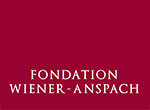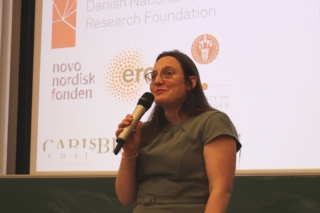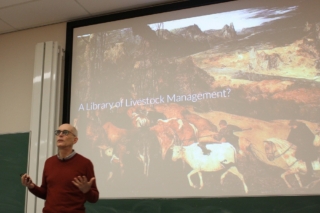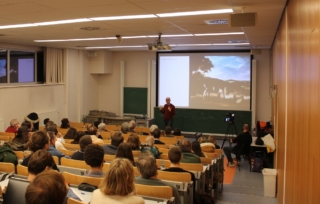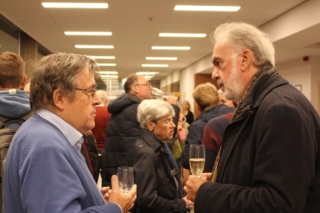
Le 14 novembre 2024 le Professeur Matthew Collins (Université de Cambridge) a donné une Philippe WIener Lecture à l’ULB, où il a été accueilli par la Dr Alicia Van Ham-Meert (CReA-Patrimoine) et par la Professeure Kristin Bartik.
Matthew Collins est McDonald Professor in Palaeoproteomics au Département d’Archéologie de l’Université de Cambridge. Combinant plusieurs disciplines (dont l’immunologie et la spectrométrie de masse des protéines), ses recherches visent à détecter et interpréter des traces de protéines dans les restes archéologiques et fossiles. Avec son ancien doctorant, le Dr Mike Buckley, il a développé ZooMS (Zooarchaeology by Mass Spectrometry), une méthode permettant d’identifier rapidement les os et autres matériaux à base de collagène grâce à l’empreinte peptidique massique.
Abstract
The unifying principle for biologists is the theory of evolution by descent, first articulated by Charles Darwin. According to this theory, copying errors in DNA are subject to natural selection, shaping future generations. A similar approach is employed in manuscript studies, such as in the analysis of biblical texts, where copying / translation errors—like whether Moses is depicted with horns —allow scholars to trace the dissemination of ideas across time and geography.
When writing on parchment made from animal skins, these two processes converge. The written text communicates one message, but the biological material of the parchment itself carries another—the life history of the animals whose skins were used. Through genetics, we can trace the relationships among these animals and link documents written on parchment across centuries. The proteins and lipids speak to age, health and climate. This concept underpins the emerging field of bio-codicology, which studies books as material culture, focusing on the biological origins of the animals whose skins became the medium for human ideas.
In this lecture, we will examine manuscripts from the perspective of a biologist, not as historians or conservators. We will explore how biology can offer valuable insights into manuscript studies, but we will also recognise that fully understanding the story of manuscripts and manuscript culture requires interdisciplinary collaboration. Only by working together across disciplines can we piece together a unified and comprehensive picture of these remarkable cultural artefacts.


